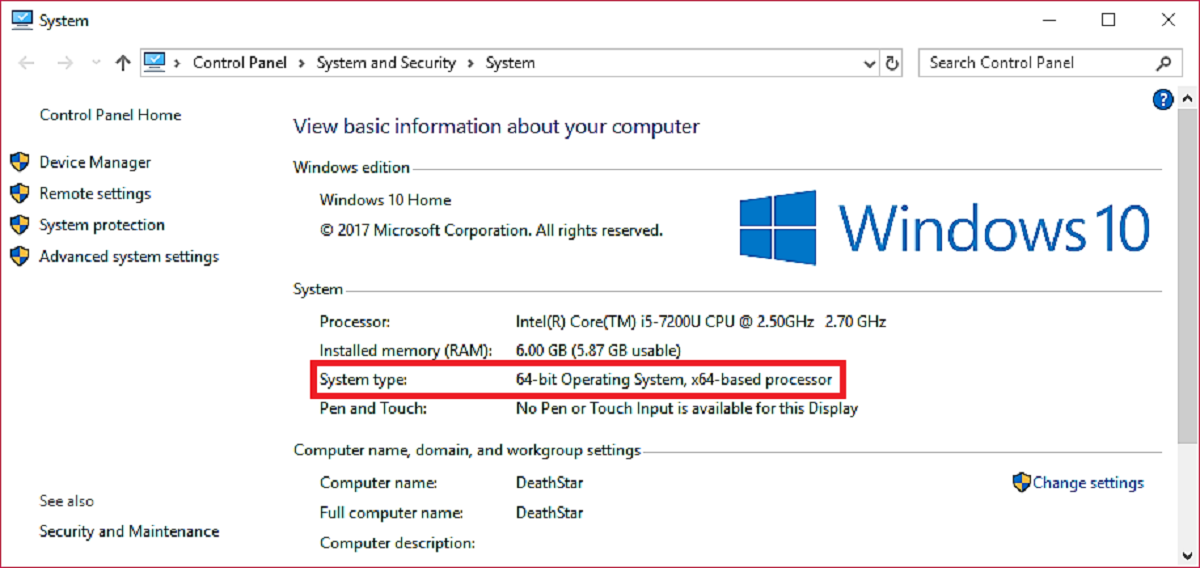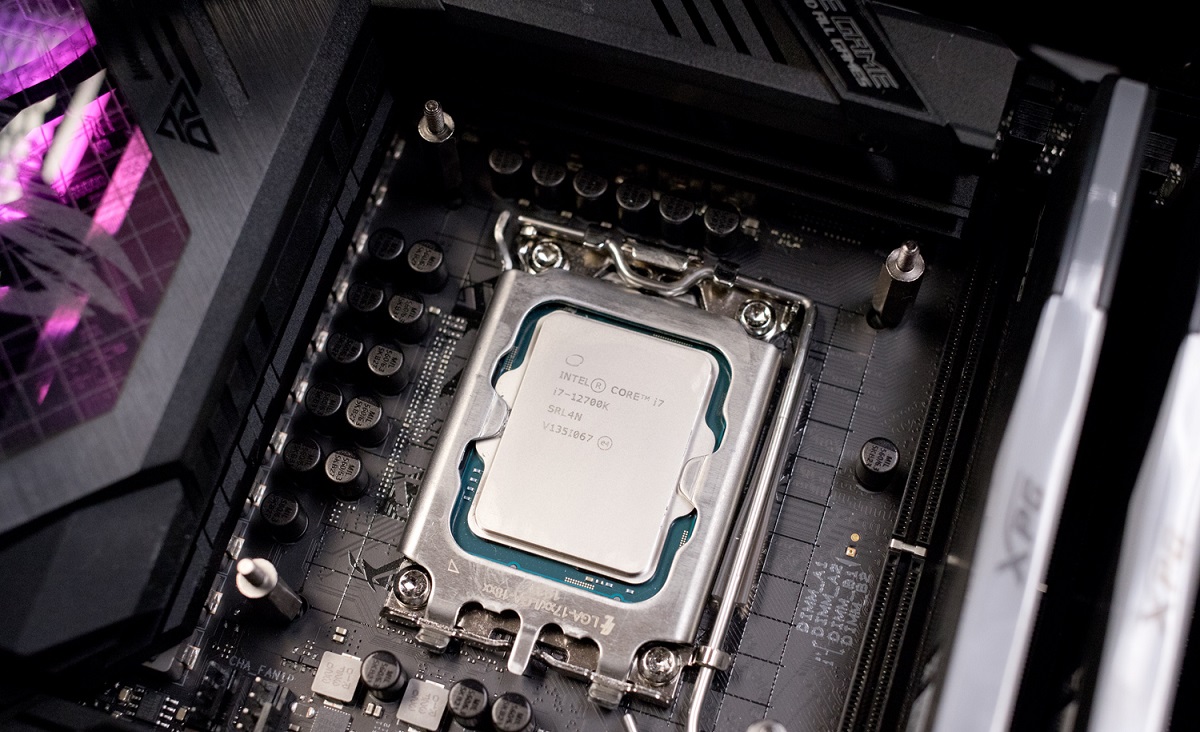Introduction
Knowing the maximum RAM capacity of your device is crucial when considering an upgrade or troubleshooting performance issues. RAM, or Random Access Memory, plays a vital role in the overall speed and efficiency of your computer or mobile device. By understanding the maximum RAM capacity, you can determine if your device can handle additional memory modules or if it is already operating at its peak performance.
In this article, we will guide you through the process of checking the maximum RAM capacity on different operating systems, including Windows, macOS, Linux, Android, and iOS. Whether you are a tech-savvy user or a beginner, these step-by-step instructions will help you find the information you need.
Before we dive into the specific methods for each operating system, it’s important to note that the steps may vary slightly depending on the version or model of your device. However, the general concepts and approaches remain the same, so you can adapt the instructions accordingly.
So, without further ado, let’s explore the different ways to check the maximum RAM capacity on various operating systems.
Checking the Maximum RAM Capacity in Windows
If you’re using a Windows computer, there are several simple ways to determine the maximum RAM capacity. Here are a few methods you can try:
- System Information: The easiest way to check the maximum RAM capacity is by using the System Information tool. To access it, press the Windows key + R on your keyboard to open the Run dialog box. Then, type “msinfo32” (without the quotes) and press Enter. In the System Information window that appears, look for the “Installed Physical Memory (RAM)” field. There, you can find the total installed RAM and the maximum capacity supported by your system.
- Task Manager: Another way to check the maximum RAM capacity in Windows is by using the Task Manager. Press the Ctrl + Shift + Esc keys simultaneously to open the Task Manager. In the Task Manager window, click on the “Performance” tab. Under the “Memory” section, you will find the total physical memory installed on your system. The value displayed is the maximum RAM capacity supported by your device.
- Manufacturer’s Website: If you know the make and model of your computer, you can also visit the manufacturer’s official website. Look for the product specifications or documentation section for your specific model. There, you will find detailed information about the maximum RAM capacity supported by your device.
- Third-Party Software: Additionally, there are third-party software programs available that can provide detailed information about your system’s hardware, including the maximum RAM capacity. Some popular options include CPU-Z, Speccy, and Belarc Advisor. These tools can give you a comprehensive overview of your system’s specifications, including RAM capacity.
By using any of these methods, you can easily find out the maximum RAM capacity supported by your Windows computer. This information will be helpful when upgrading or troubleshooting memory related issues.
Checking the Maximum RAM Capacity on macOS
If you’re using a macOS device, such as a MacBook or iMac, there are a few ways to check the maximum RAM capacity. Here are some methods you can try:
- About This Mac: The most straightforward method is to use the “About This Mac” feature. Click on the Apple logo in the top menu bar and select “About This Mac.” In the window that appears, click on the “Overview” tab. Here, you will see the installed RAM along with the “Memory” section. The maximum supported RAM capacity will be listed under the memory information.
- System Profiler: Another way to view the maximum RAM capacity on macOS is by using the System Profiler feature. Open “Applications” > “Utilities” > “System Profiler” to launch the System Profiler window. In the sidebar, under the “Hardware” section, select “Memory.” You will find detailed information about the installed RAM, including the maximum capacity supported by your Mac.
- Model Identifier: If you know the model identifier of your Mac, you can look up the technical specifications on the Apple Support website. Go to the Apple Support website and search for “Apple technical specifications.” Enter your model identifier in the search bar, and you will find the detailed specifications, including the maximum RAM capacity supported.
- Third-party Apps: Additionally, there are third-party apps available on the App Store that can provide detailed hardware information, including the maximum RAM capacity supported by your Mac. Some popular options include iStat Menus, Macs Fan Control, and MacKeeper. These apps can give you a comprehensive overview of your system’s specifications, including RAM capacity.
By utilizing any of these methods, you can easily determine the maximum RAM capacity supported by your macOS device. This information will be valuable when considering RAM upgrades or troubleshooting performance issues related to memory.
Checking the Maximum RAM Capacity on Linux
If you’re using a Linux-based operating system, such as Ubuntu, Fedora, or Debian, you can follow these methods to check the maximum RAM capacity:
- Terminal Commands: One way to find the maximum RAM capacity on Linux is by using terminal commands. Open the terminal and enter the command “free -h”. This will display the total installed memory and its maximum capacity.
- Inxi Tool: Another option is to use the “inxi” command-line tool. If it is not already installed on your system, you can install it using the package manager specific to your Linux distribution. Once installed, open the terminal and type “inxi -m” or “inxi -Fxz” to get detailed information about your system, including the maximum RAM capacity.
- dmidecode: The “dmidecode” command is another useful tool to check hardware information on Linux. Open the terminal and type “sudo dmidecode -t memory” to view detailed information about the installed RAM, including the maximum supported capacity.
- System Monitor: Some Linux distributions, like Ubuntu, provide a graphical System Monitor utility. You can access it by searching for “System Monitor” in the applications menu. In the System Monitor, click on the “Resources” tab. Here, you can find information about your installed memory and its maximum capacity.
By using these methods specific to Linux, you can easily determine the maximum RAM capacity supported by your system. This information will be valuable when considering RAM upgrades, optimizing performance, or troubleshooting memory-related issues on your Linux-based machine.
Checking the Maximum RAM Capacity on Android
If you’re using an Android smartphone or tablet, you can follow these steps to check the maximum RAM capacity:
- Settings: Open the “Settings” app on your Android device. The location of the settings may vary slightly depending on the device manufacturer and Android version.
- About Phone: In the settings, scroll down and look for the “About phone” or “About device” option. Tap on it to access the device information.
- Specifications: Look for the “Specifications” or “Device information” section. Here, you will find detailed information about your device, including the RAM capacity. The maximum supported RAM capacity will be listed here.
- System Information Apps: Alternatively, you can download third-party system information apps from the Google Play Store. Popular options include CPU-Z, AIDA64, and Droid Hardware Info. These apps provide a comprehensive overview of your device’s specifications, including the maximum RAM capacity.
By following these steps or using system information apps, you can easily find the maximum RAM capacity supported by your Android device. Knowing this information will be useful when considering memory-intensive applications or when deciding if a RAM upgrade is necessary to optimize performance.
Checking the Maximum RAM Capacity on iOS
If you’re using an iPhone or iPad with iOS, you can find the maximum RAM capacity through the following methods:
- About: Open the “Settings” app on your iOS device. Scroll down and tap on “General,” then select “About.” On the “About” page, you will find information about your device, including the total installed RAM capacity.
- System Information Apps: There are various system information apps available on the App Store that can provide detailed information about your iOS device’s hardware, including the maximum RAM capacity. Popular options include CPU Identifier, System Status, and Battery Life. Download and install one of these apps to view the RAM capacity and other system specifications.
- Website Lookup: If you know the model of your iPhone or iPad, you can visit Apple’s official website and search for the device model. In the technical specifications section, you will find detailed information about the RAM capacity supported by your particular model.
By utilizing these methods, you can easily determine the maximum RAM capacity supported by your iOS device. This information can be helpful when considering memory-demanding apps or when deciding if a RAM upgrade is necessary to enhance performance.
Conclusion
Checking the maximum RAM capacity of your device is essential for optimizing its performance, troubleshooting memory issues, and determining if an upgrade is feasible. Throughout this article, we explored various methods for checking the maximum RAM capacity on different operating systems.
If you’re using a Windows computer, you can use the System Information tool, Task Manager, or check the manufacturer’s website. On macOS, you can utilize the “About This Mac” feature, System Profiler, or search for the model identifier on the Apple Support website. Linux users can rely on terminal commands, the “inxi” tool, or the System Monitor. Android users can find the maximum RAM capacity in the device’s settings or by using third-party system information apps. Finally, iOS users can check the RAM capacity through the device’s settings or by downloading system information apps.
By following these methods, you can easily discover the maximum RAM capacity supported by your device, empowering you to make informed decisions regarding upgrades and performance optimization.
Remember, the steps and locations of settings may vary slightly depending on the device manufacturer and operating system version. It’s always a good idea to consult the official documentation or support resources specific to your device for accurate and up-to-date information.
So, whether you’re a computer enthusiast, a tech-savvy professional, or a casual user, you can now confidently explore the maximum RAM capacity of your device and utilize this knowledge to enhance its performance and efficiency.

























